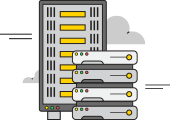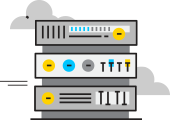Brief information about Memory address register
The Memory Address Register (MAR) is a key component in computers, particularly in the CPU (Central Processing Unit). It’s responsible for holding the addresses in memory where data will be read from or written to. This address is sent from the CPU to the main memory or other storage devices, allowing the computer to access the required information at that particular location.
The History of the Origin of Memory Address Register and the First Mention of It
Memory Address Register has its roots in the early days of computer development. During the late 1940s and early 1950s, computer scientists began to devise ways to automate the addressing of memory locations. The MAR’s invention can be attributed to the evolution of stored-program computers where instructions were stored in the same memory system as data.
The concept of the MAR became essential with the development of the Von Neumann architecture, named after John von Neumann, which laid the foundation for modern computer architecture.
Detailed Information about Memory Address Register. Expanding the Topic Memory Address Register
The MAR plays a vital role in the functioning of a computer. It connects the CPU to the memory, serving as an intermediary in the communication process. When the CPU needs to access data from memory, it loads the memory address into the MAR, which then fetches the data from the specified location.
The interaction between MAR and other components is synchronized with the system clock, ensuring a smooth flow of information.
The Internal Structure of the Memory Address Register. How the Memory Address Register Works
The MAR consists of a set of binary storage locations called flip-flops. These flip-flops store the memory address as binary values. When the CPU requests data, the address is placed into the MAR, which then sends the address to the memory controller. The controller reads or writes data at the requested location.
This process is integral to the fetch-decode-execute cycle that all modern computers utilize.
Analysis of the Key Features of Memory Address Register
- Address Holding: Holds the address of the location to be accessed.
- Synchronization: Works in sync with the CPU and memory.
- Data Transfer: Facilitates the reading and writing of data.
- Integration: Part of the larger control unit in the CPU.
Types of Memory Address Register
Different implementations and technologies have led to various types of MAR. Here’s a simple table outlining them:
| Type | Description |
|---|---|
| Standard MAR | Used in most general-purpose computers. |
| Multi-Port MAR | Allows multiple simultaneous accesses for parallel processing. |
| Cache-equipped MAR | Includes a cache for frequently accessed addresses. |
Ways to Use Memory Address Register, Problems and Their Solutions Related to the Use
The MAR’s primary function is within computer processing. However, errors and failures in the MAR can lead to system crashes or incorrect data retrieval. Solutions may include:
- Regular maintenance and updates
- Ensuring compatibility with the rest of the system
- Implementing error-detection techniques
Main Characteristics and Other Comparisons with Similar Terms
Here are some comparisons between MAR and other registers like Memory Buffer Register (MBR):
| Feature | MAR | MBR |
|---|---|---|
| Function | Holds address | Holds data |
| Connection | CPU to Memory | Memory to CPU |
| Structure | Binary | Binary |
Perspectives and Technologies of the Future Related to Memory Address Register
With the advent of quantum computing, AI-driven processes, and more advanced parallel processing techniques, the future of MAR could see further refinement and optimization. New technologies may enhance the speed and efficiency of the MAR, making it adaptable to newer forms of computing.
How Proxy Servers Can be Used or Associated with Memory Address Register
In the context of proxy servers like those provided by OneProxy, the MAR doesn’t directly interact with the service. However, it is a fundamental part of the computer’s operation, and therefore a well-functioning MAR ensures that requests to and from the proxy server are handled efficiently.
Related Links
- Wikipedia – Memory Address Register
- Computer Architecture: A Quantitative Approach
- OneProxy – Official Website
Note: Always refer to reputable sources for accurate information regarding memory address registers or consult with a computer hardware expert.




